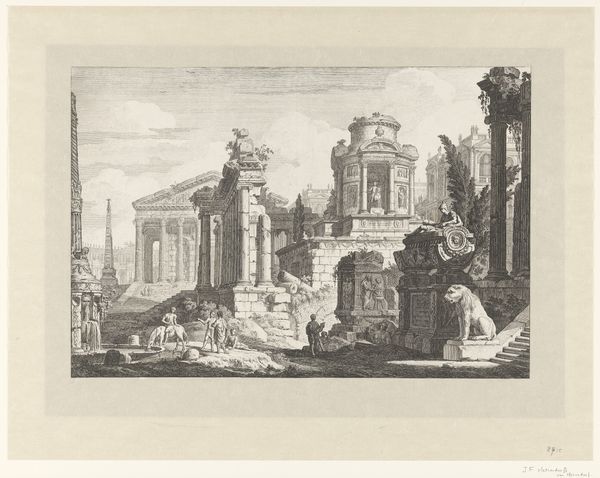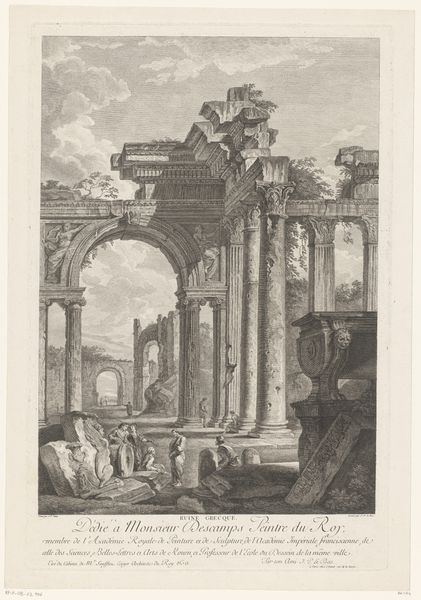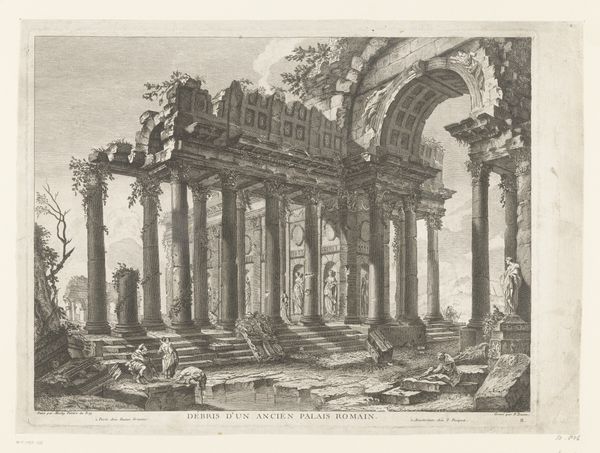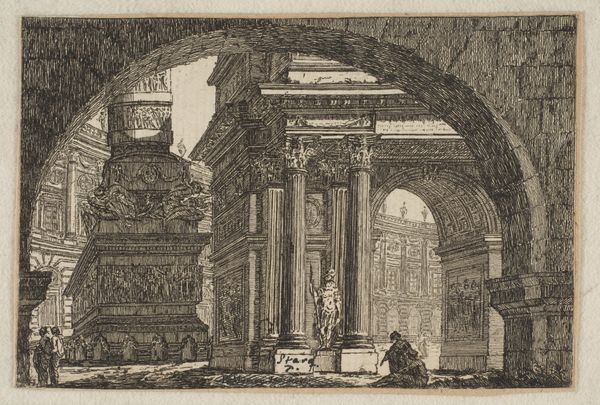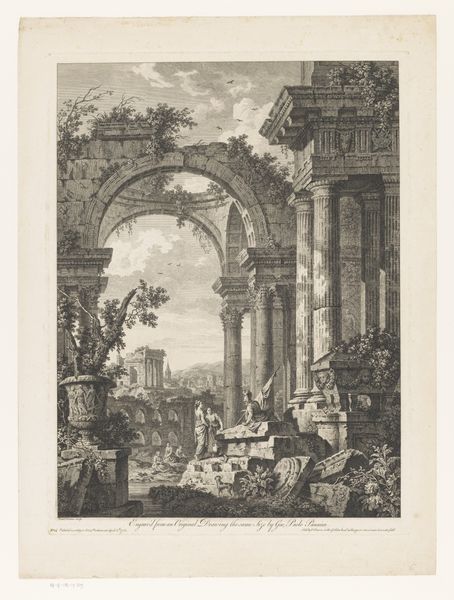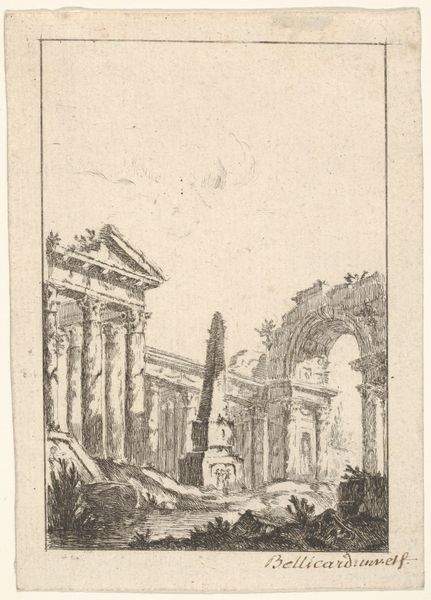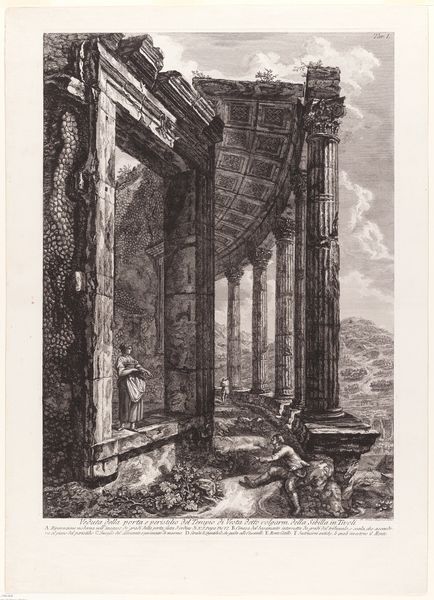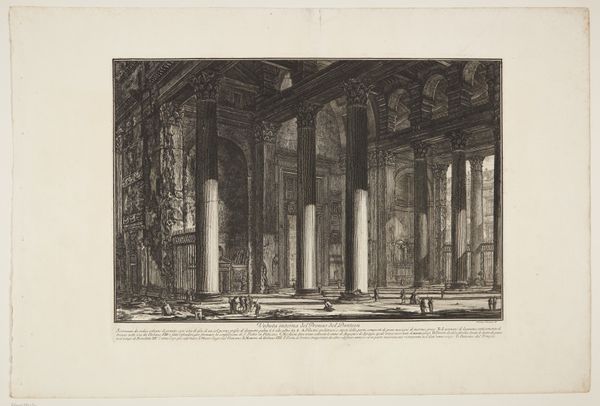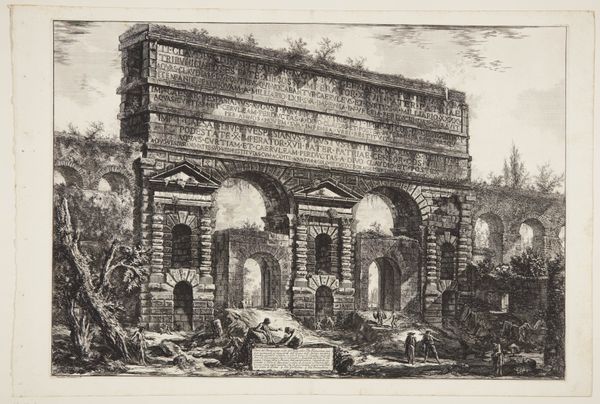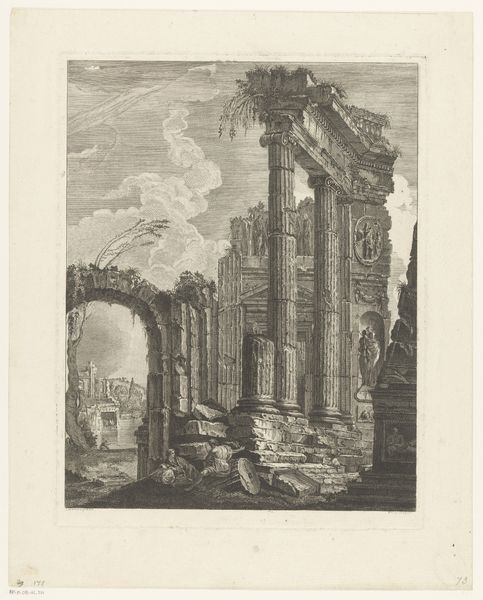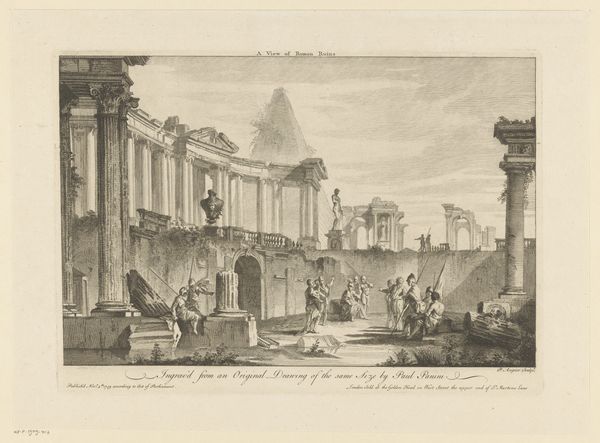
print, engraving
#
neoclacissism
# print
#
old engraving style
#
landscape
#
geometric
#
history-painting
#
engraving
Dimensions: height 275 mm, width 407 mm
Copyright: Rijks Museum: Open Domain
Curator: So much detail! I’m immediately struck by the sheer density of line work in this print. Editor: This is "Ruïnes met de Farnese Hercules," a Neoclassical engraving made sometime between 1742 and 1806 by Johann Ferdinand von Hohenberg. What do you make of its atmosphere? Curator: Melancholic, definitely. It's a landscape teeming with these grand architectural ruins, but nature seems to be slowly reclaiming everything. See the way the foliage is creeping over the stonework? Editor: Absolutely, and that tension is key. Hohenberg really hones in on the way materials degrade, the labour and capital investment swallowed by time. We're looking at deliberate choices about mark-making—all those lines carefully etched to evoke crumbling stone and overgrowth. It emphasizes both the splendor and the ephemeral nature of human achievement. Curator: The “Farnese Hercules” in the title suddenly becomes a poignant detail, doesn’t it? Here’s this symbol of incredible strength and mythological power placed within a scene of inevitable decay. It's almost comical! This hyper-masculine ideal in dialogue with complete erosion. Editor: I see the composition as Hohenberg really digging into this historical-social dynamic between classicism and ruination. Engravings like these served as accessible visual records—sort of early mass media—spreading the Neoclassical obsession with antiquity. And let’s remember the physical effort that goes into creating an engraving like this. Imagine the hours! Curator: I wonder how contemporary audiences received this...a picturesque reminder of lost glory? Or a darker premonition? Maybe that ambiguity is what makes it so compelling. I find it both grand and deeply unsettling. Editor: Right. An object designed to propagate an aesthetic ideal, rendered through a process reflecting human endurance, ultimately portraying an architecture overwhelmed by organic matter and historical entropy. Layers on layers! Thanks for your reflections, by the way. Curator: Of course! What a strange, and powerful little piece.
Comments
No comments
Be the first to comment and join the conversation on the ultimate creative platform.
